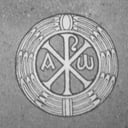What is the major religion in Mongolia?
According to the 2010 National Census, among Mongolians aged 15 and above, 53% were Buddhists, while 39% were non-religious.
Mongolian shamanism has been widely practised throughout the history of what is now Mongolia, with similar beliefs being common among the nomads of central Asia. They gradually gave way to Tibetan Buddhism, but shamanism has left a mark on Mongolian religious culture, and it continues to be practiced. The Kazakhs of western Mongolia, some Mongols, and other Turkic peoples in the country traditionally adhere to Islam.
Throughout much of the 20th century, the communist government repressed religious practices. It targeted the clergy of the Mongolian Buddhist Church, which had been tightly intertwined with the previous feudal government structures.
The fall of communism in 1991 restored public religious practice. Tibetan Buddhism, which had been the predominant religion prior to the rise of communism, again rose to become the most widely practised religion in Mongolia. The end of religious repression in the 1990s also allowed for other religions to spread in the country.
According to the Christian missionary group Barnabas Fund, the number of Christians grew from just four in 1989 to around 40,000 as of 2008. There are some 1,000 Catholics in Mongolia and, in 2003, a missionary from the Philippines was named Mongolia's first Catholic bishop. In 2017 Seventh-day Adventists reported 2,700 members in six churches up from zero members in 1991.
More Info:
en.wikipedia.org
